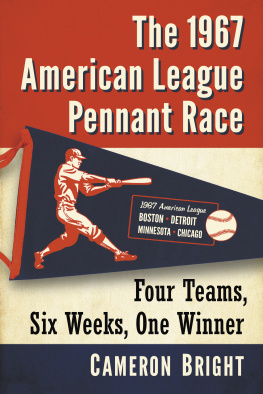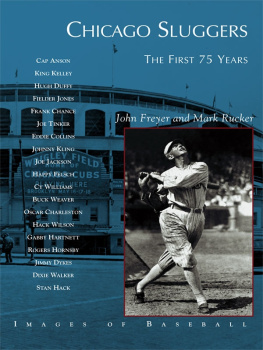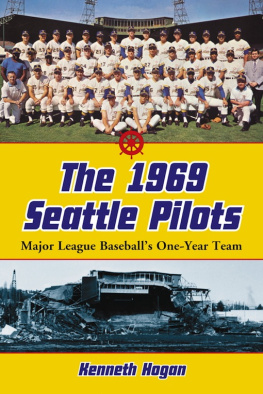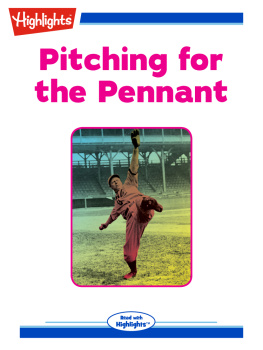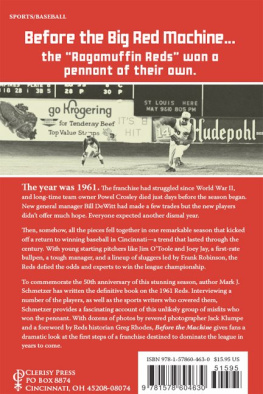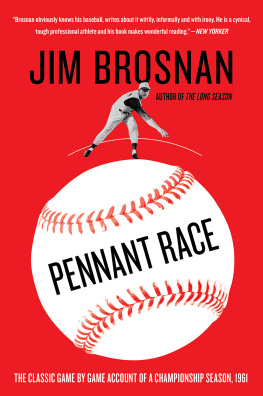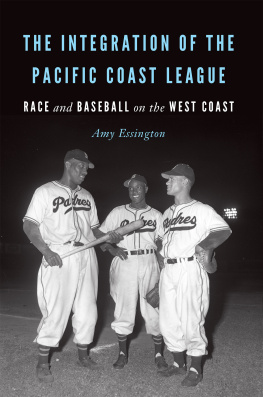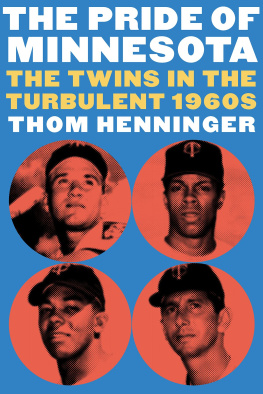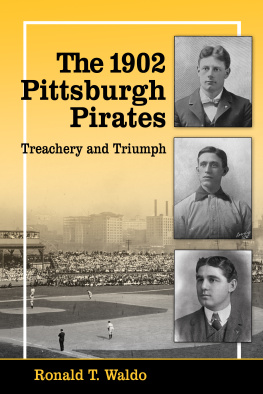
The 1967 American League Pennant Race
Four Teams, Six Weeks, One Winner
Cameron Bright

McFarland & Company, Inc., Publishers
Jefferson, North Carolina
LIBRARY OF CONGRESS CATALOGUING DATA ARE AVAILABLE
BRITISH LIBRARY CATALOGUING DATA ARE AVAILABLE
e-ISBN: 978-1-4766-3297-1
2018 Cameron Bright. All rights reserved
No part of this book may be reproduced or transmitted in any form or by any means, electronic or mechanical, including photocopying or recording, or by any information storage and retrieval system, without permission in writing from the publisher.
Front cover illustration 2018 CSA Images
McFarland & Company, Inc., Publishers
Box 611, Jefferson, North Carolina 28640
www.mcfarlandpub.com
For my father and mother
Alec and Clarita
Athletes and sports fans
Acknowledgments
Both my parents were athletesmembers of the Olympic ski teamand then sports fans. While I was a child, my father took me to all manner of sporting contests: professional baseball, hockey, basketball and tennis, all levels of track and field, college football, baseball, and especially hockey, high school sports, and even sports that he had little interest in like soccer, curling and lacrosse. I owe my passion as a sports fan to him.
I dont remember the first time I visited Fenway Park, but I was familiar with it when a classmate and I were allowed to go to a night game in the late spring of 1967 with our first grade teacher. I had never been to a night game. As we emerged from the runway in the stands beyond third base, the bright green field under the lights dazzled me. It remains one of the most awesome sights that I have ever seen.
In New England, the 1967 season remains very much alive. As I first contemplated this book, I was driving with the radio on. The DJ unexpectedly referenced Billy Rohr. Although almost 45 years had elapsed since Rohrs short career ended, the announcer felt no need to identify Rohr for his audience. I was not listening to a sports talk station, but one with an all-music format.
When a librarian who fielded my many requests for obscure and long out-of-print baseball tomes found out why I wanted these books, she brought to the library and showed me her 8 10 autographed glossy of Tony Conigliaro. She is not alone. The number of people who have mementos from the 1967 season or can instantly, and excitedly, recall details like Dean Chances throwing motion or Walt Williams backing up first base constantly surprises me. Their enthusiasm kept me inspired.
While writing this book, I have benefited from a lot of support. Researching from a small town in the corner of the country would not be possible without the tremendous resources of public libraries. In addition to Joanne Libby and her colleagues at Freeport Public Library, I am particularly grateful to Eileen, the interlibrary loan librarian at Portland Public Library, for her persistence in sourcing and borrowing reels of newspaper microfilm. Even institutions officially willing to lend microfilm are often reluctant, have other short-term priorities, or are understaffed. Without her tenacity, I would not have had access to the material to write this book. My thanks are also due to Abraham Schechter and Gabrielle Danielo at the Portland Public Librarys Portland Room.
Another valuable resource was the Giamatti Research Center in Cooperstown, New York. Reference librarian Cassidy Lent pulled and assembled a wide-ranging list of player files, reference books and bound periodicals to make my visits there as efficient as possible. She was also a valuable resource for prioritizing my research time. Thanks to her, my days were productive beyond reasonable expectation.
Denny Ryus bailed me out at a critical moment with much needed image support.
Statistics are vitally important to any conversation about baseball. There are two websites that I consulted constantly at every stage of the process. The voluminous information on retrosheet.org and baseball-reference.com was invaluable for corroborating statistics and game summaries from other sources.
I read hundreds of newspapers from the 1967 season on microfilm. The beat reporters game stories included revealing interviews and eyewitness perspectives that cannot be gleaned from objective game summaries. Their passion for the game, the teams, and the players was an incredible source of insight. Opinions of sports columnists helped me identify and focus on the important issues of the pennant race during 1967.
David Weld and Pete Collins each read an early version of this manuscript. I am thankful for their best efforts. All the remaining mistakes and oversights are my responsibility.
This book would not have been possible without the love and support of my wife Patty, who is the biggest baseball fan in the family. I am grateful to my now grown children Wesley and Acacia who patiently listened with apparent interest to countless stories that began, You wont believe what happened in 1967.
Preface
On September 6, 1967, four teams tied for the lead of the American League. It was not a quirky coincidence. All four teams would spend the seasons final six exhausting weeks locked in the biggest, closest pennant race in major league history. During the final month, each team led at some point and none led by more than one game.
The Red Sox won the pennant on the seasons last day, with help from the California Angels. Only four days before, the Red Sox were loudly booed off their home field and believed they had lost their last chance at the pennant.
Any of the teams could have, or should have, won. The Tigers, Twins and White Sox were not merely worthy foils, but just as exciting and frustrating for their fans as the Red Sox. All four teams supplied stars, goats and characters. Each figures equally in this great story of playing under pressure.
A critical part of understanding this pennant race is its context. The 1967 season was at or near the end of one of baseballs eras. There were no playoffs, no free agents, no long-term player contracts, no designated hitter, no closers, and no weightlifting. Pitchers still threw from a high mound; starters often completed nine innings; and the spitball, while officially banned, seemed ubiquitous. Some players did not wear batting helmets and catchers had only cloth caps under their masks.
Players and their skills were not viewed as rare assets to be preserved. Instead, they were paid and deployed like perishable commodities. Even correcting for inflation, salaries of the day seem small. The major-league minimum of $7,000 adjusted for inflation would be about $50,000 50 years later. The highest paid stars made $100,000about three quarters of a million dollars. Baseball was such a small business that one owner left his office door at the stadium open to the public.
Although that seems quaint, these were not simpler times somehow innocent and carefree. The season featured thousands of war fatalities in Vietnam, large-scale urban rioting and massive industrial strikes. This upheaval forced players to frequently miss games and games to be postponed and moved.
This book chronologically covers the entire 1967 season, although the focus is on the tensions and drama of the pennant race. The early season provides context to introduce the characters, their times and the game they played.
The emphasis is on human beings striving to succeed in different ways as the pennant race took each team through one pivotal crisis after another. Fairly conventional statistics are used as shorthand for describing player performance. There are no groundbreaking analytics. Players personal lives are examined only in the rare cases where they have an impact on this pennant race.
Next page
